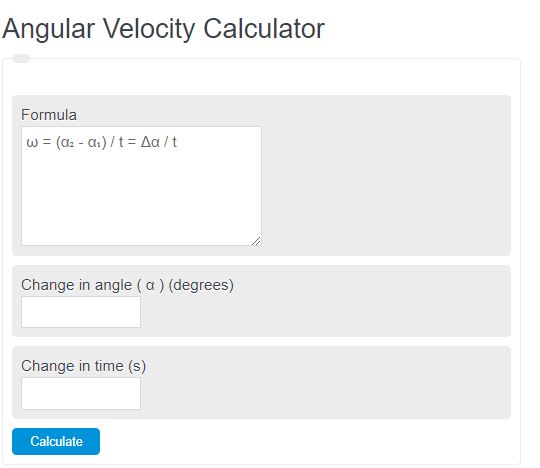Enter the change in angle (theta) in degrees, and the total time passed, in seconds, to calculate the angular velocity of your object. Angular velocity is a measure of the speed of rotation.
- All Velocity Calculators
- Angular Acceleration Calculator
- Velocity Calculator
- Instantaneous Velocity Calculator
- Tangential Velocity Calculator
- Root Mean Square Velocity Calculator
- Radial Velocity Calculator
- Angular Torque Calculator
Angular Velocity Formula
Typically angular velocity is calculated through a change in angle, normally represented by theta, or alpha, and a change in time. This change in time can be any unit. The resulting velocity will be a change in degrees per unit time displayed as follows:
ω = (α₂ - α₁) / t = Δα / t
- Where ω is the angular velocity
- α is the change in angle
- and t is time.
Angular Velocity Definition
Angular velocity is the total angular distance traveled per unit of time. Angular velocity is the same as linear velocity, except it’s measured in radians or degrees per time as opposed to distance per time. When looking at the angular velocity, the object that is rotating does have an instantaneous linear velocity that is a function of angular speed and the radius at which it’s rotating.
How to calculate angular velocity?
Using the formulas above, calculating angular velocity becomes pretty straightforward. First, you need to measure the total degrees of rotation over a certain amount of time. Then you can simply plug it into the calculator, and you’ll be set. What if you can measure the change in angle?
In this case, you need to measure the instantaneous linear velocity and the radius at which the object is rotating. From here you can do some equation manipulation to calculate the angular velocity. We will explore this on another page.

